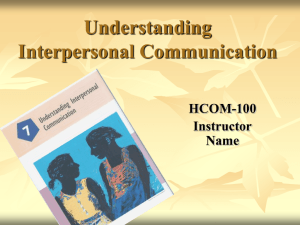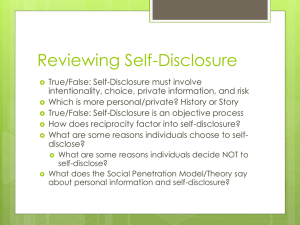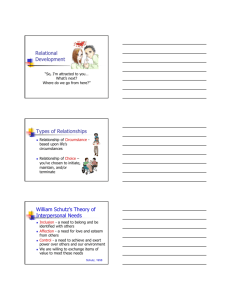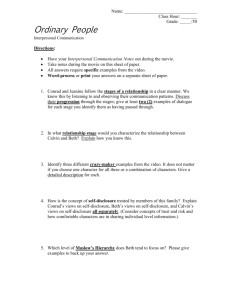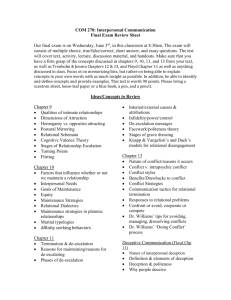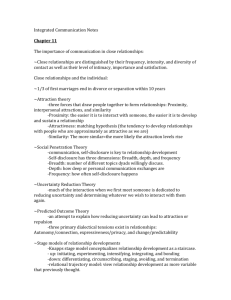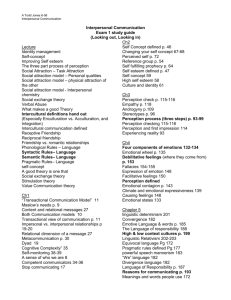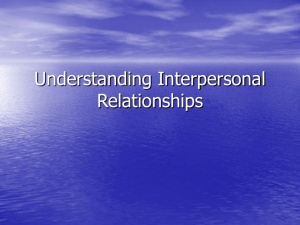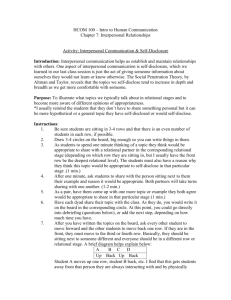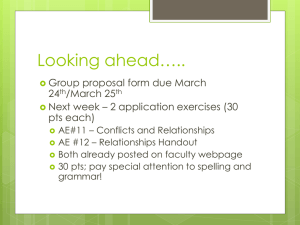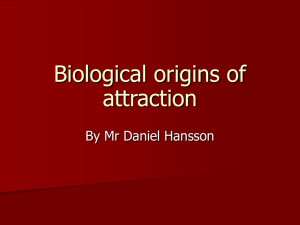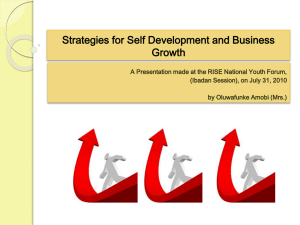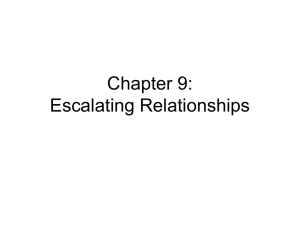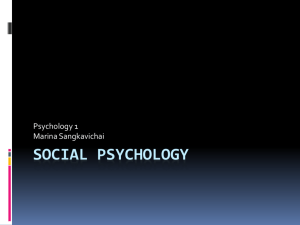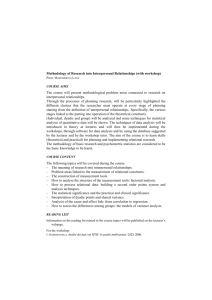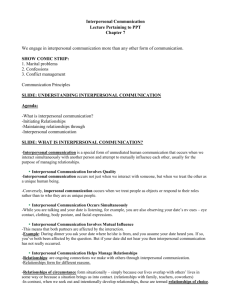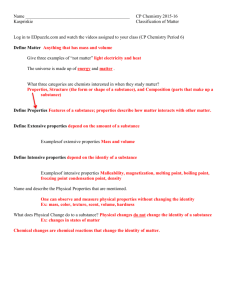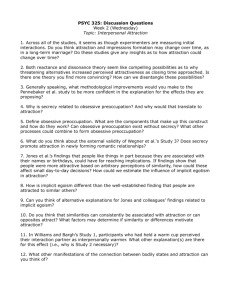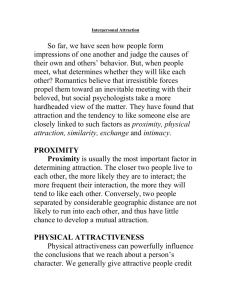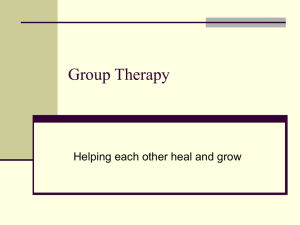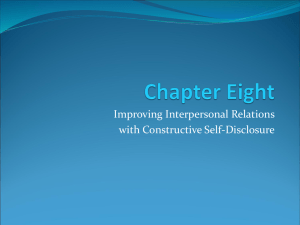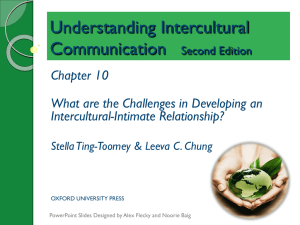Exam #1 Study Guide
advertisement
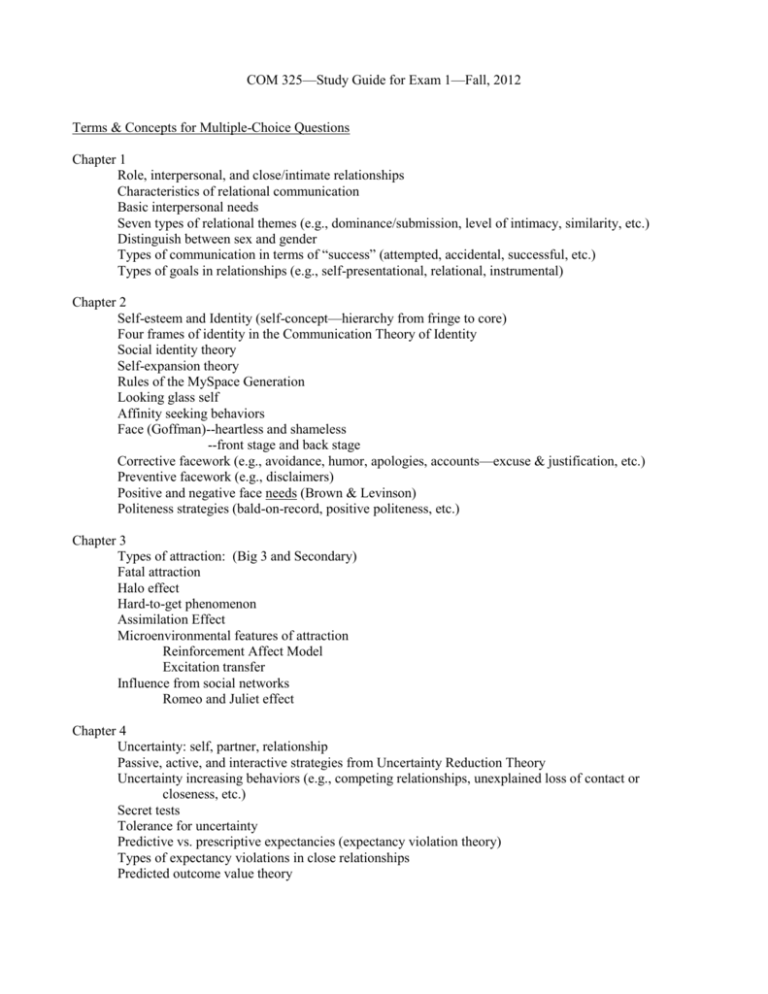
COM 325—Study Guide for Exam 1—Fall, 2012 Terms & Concepts for Multiple-Choice Questions Chapter 1 Role, interpersonal, and close/intimate relationships Characteristics of relational communication Basic interpersonal needs Seven types of relational themes (e.g., dominance/submission, level of intimacy, similarity, etc.) Distinguish between sex and gender Types of communication in terms of “success” (attempted, accidental, successful, etc.) Types of goals in relationships (e.g., self-presentational, relational, instrumental) Chapter 2 Self-esteem and Identity (self-concept—hierarchy from fringe to core) Four frames of identity in the Communication Theory of Identity Social identity theory Self-expansion theory Rules of the MySpace Generation Looking glass self Affinity seeking behaviors Face (Goffman)--heartless and shameless --front stage and back stage Corrective facework (e.g., avoidance, humor, apologies, accounts—excuse & justification, etc.) Preventive facework (e.g., disclaimers) Positive and negative face needs (Brown & Levinson) Politeness strategies (bald-on-record, positive politeness, etc.) Chapter 3 Types of attraction: (Big 3 and Secondary) Fatal attraction Halo effect Hard-to-get phenomenon Assimilation Effect Microenvironmental features of attraction Reinforcement Affect Model Excitation transfer Influence from social networks Romeo and Juliet effect Chapter 4 Uncertainty: self, partner, relationship Passive, active, and interactive strategies from Uncertainty Reduction Theory Uncertainty increasing behaviors (e.g., competing relationships, unexplained loss of contact or closeness, etc.) Secret tests Tolerance for uncertainty Predictive vs. prescriptive expectancies (expectancy violation theory) Types of expectancy violations in close relationships Predicted outcome value theory Chapter 5 Relationship initiation skills (initiation, self-disclosure, emotional support, negative assertion, conflict management) Dimensions of self-disclosure Types of Turning Points Goals for a first date Three types of opening lines Short Answer Questions Chapter 1 1. 2. Be able to explain briefly at least five of the eight characteristics that distinguish relationships (e.g., voluntary-nonvoluntary, platonic-romantic, etc.). Be able to distinguish relational communication from interpersonal communication. Chapter 2 3. 4. Be able to explain Self Expansion Theory. Know the three factors that affect the severity of a face threat (PDR). Use the class notes for this, not the book. Chapter 3 5. 6. Be able to describe any three personal qualities or preferences that seem to influence early attraction processes. Why is it the case that sometimes opposites are attracted to each other? When is this type of attraction not likely to work out? Chapter 4 7. 8. What does rewardingness have to do with reactions to expectancy violations? Be able to define Predicted Outcome Value Theory. Chapter 5 9. 10. 11. Be able to list and describe three barriers to the initiation of a relationship? Be able to describe three of the six risks associated with self-disclosure. Be able to list the 5 stages of coming together in Knapp and Vangelisti’s Staircase Model and give two characteristics for each.
